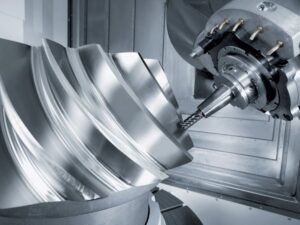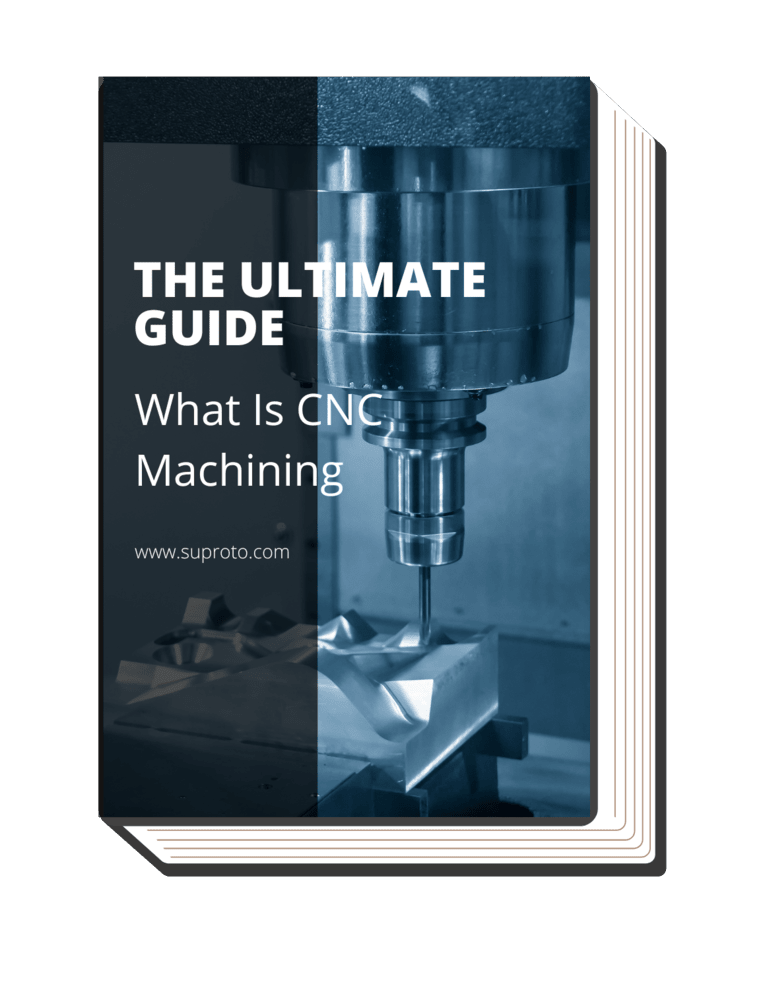Mold is an important processing technology equipment in the manufacturing industry. The mold industry is an important foundation for the development of various sectors of the national economy and the foundation of a country’s industrial development. The value of the final product produced by the mold is generally dozens to hundreds of times the value of the mold itself.
In all walks of life, especially in aviation, aerospace machinery, automobiles, electronics, electrical appliances, instruments, household appliances and other products, most parts depend on mold forming. The technical level of mold design and manufacturing determines the final quality and economic benefits of products also show the company’s new product research and development capabilities and market competitiveness.
The basic requirements of mold manufacturing are high manufacturing precision, long service life, short manufacturing cycle and low mold cost. Mold manufacturing is characterized by high manufacturing quality requirements, complex shapes, high material hardness, and usually single-piece production.
At present, there are various processes and new processes combined by these processes to manufacture molds. The development of these processes is determined by the complexity of the mold itself and the mechanical properties of the processed material. In order to improve production automation, accelerate mold manufacturing speed and improve mold manufacturing quality, some new processes and equipment have emerged.
Numerical control technology, accompanied by numerical control machine tools, has revolutionized mold manufacturing. This technology has become an essential enabler for the industry, facilitating automation, flexibility, and integrated production processes. All these aspects of manufacturing are deeply rooted in the application of numerical control technology.
Moreover, this technology serves as an invaluable tool in improving product quality and labor productivity. As such, Computer Numerical Control (CNC) machining holds a critical and irreplaceable role in the field of mold manufacturing. Its importance is further emphasized as it is at the core of development within the industry.
This significant influence of numerical control technology can be demonstrated in the following three areas:
1. The Application of CNC Machining in Mold Manufacturing can Meet the Requirements of High-precision Manufacturing and Complex Changes in Shape
About 90% of the molds are mainly completed by machining methods such as milling, turning, and grinding. These methods are mainly used for the final processing of mold auxiliary parts and the preprocessing and final processing of mold working parts.
Traditional mechanical processing methods mainly rely on high-tech workers to operate ordinary machine tools to process workpieces by milling, turning, grinding and other processes. Which have often, limitations in terms of efficiency that are relatively low, accuracy that is difficult to guarantee, and the labor intensity of the operator is high. In recent years, with the rapid development of CNC technology and CNC machine tools, the mold manufacturing industry has introduced a large number of automated CNC machine tools.
Among these, CNC lathes, CNC milling machines, CNC electrical machining forming machines, CNC wire-cutting machine tools and machining centers are the most. This is because the cavity mold often has a large number of spatial surfaces, and traditional machining can not meet the needs at all, but the three-axis or multi-axis linkage CNC milling machine and machining center can easily solve this problem.
Difficult-to-machine materials, precious metal molds, and thin and brittle molds with complex shapes can be processed on CNC electrical machining CNC machine tools, which can not only meet the processing needs but also achieve machining accuracy. At present, in terms of machining accuracy, the machining accuracy of CNC machine tools is far higher than that of ordinary machine tools.
With the continuous development of CNC technology and CNC machine tools, there will be more and more high-precision CNC machine tools. Using high-precision CNC machine tools for mold manufacturing will definitely meet the high precision requirements of mold manufacturing, and it will be more suitable for the modification of mold products. Furthermore, they provide a robust guarantee for the modification and replacement of mold products.
2. The Application of CNC Machining in Mold Manufacturing can Carry Out High-Speed Cutting, Improve Production Efficiency and Product Competitiveness
In the tide of market economy, the competition among enterprises is becoming increasingly fierce. At present, with the rapid development of science and technology, the technical content of products is very high.
The competition among enterprises are mainly reflected in the production cycle of products. The production cycle determines whether a product is competitive and whether it can generate huge economic benefits. Therefore, in mold manufacturing, it is necessary to improve production efficiency as much as possible and shorten the production cycle.
In particular, in the development, research and production of new products, time determines the competitiveness of products. Only by putting products on the market in a relatively short period of time can the enterprise remain invincible. Now the technology of enterprises is basically the same, given that it can shorten the production cycle.
At present, high-speed cutting in CNC machining is the most popular technology. High-speed cutting has the advantages of low temperature rise of the workpiece, small cutting force, stable processing, good processing quality, and high processing efficiency (5-10 times that of ordinary milling). And can process hard materials (<60HRC) and many other advantages.
Therefore, it has been paid more and more attention in mold manufacturing. For example: High-speed milling machine (HSM) is generally used for large and medium-sized mold processing, such as automotive panel molds, press molds, etc. Casting molds, large plastic molds and other complex surface processing, the processing accuracy can reach 0.01mm.
The maximum speed of the spindle of foreign high-speed processing machine tools has exceeded 100000r/min , the fast feed speed can reach 50-120m/min , the acceleration can reach (1-2)g, and the tool change time can be increased to l-2s. Therefore, applying high-speed cutting technology to mold manufacturing can not only ensure processing quality, but also improve production efficiency and product competitiveness.
This table continues to explore the advantages of high-speed cutting technology in CNC machining and its applications in mold manufacturing. Additionally, it highlights the specific benefits that mold manufacturers can enjoy, ranging from improved tool life and surface finish to faster response to market demands and enhanced operational flexibility.
| Advantages of High-Speed Cutting in CNC Machining |
Examples of Mold Manufacturing Applications |
Benefits for Mold Manufacturers |
| Low temperature rise of the workpiece |
Automotive panel molds |
Reduced thermal distortion of molds |
| Small cutting force |
Press molds |
Prolonged tool life |
| Stable processing |
Casting molds |
Minimized machining vibrations |
| Good processing quality |
Large plastic molds |
Improved surface finish of molds |
| High processing efficiency (5-10 times that of ordinary milling) |
Complex surface processing |
Shortened production lead times |
| Ability to process hard materials (<60HRC) |
High precision in processing (0.01mm) |
Increased versatility in mold design |
| Spindle speed exceeding 100,000r/min |
Improved production efficiency |
Higher productivity and output |
| Fast feed speed (50-120m/min) |
Enhanced product competitiveness |
Faster response to market demands |
| High acceleration (1-2g) |
Reduced production cycle |
Faster time-to-market for new products |
| Quick tool change time (1-2s) |
Faster development, research, and production of new products |
Improved operational flexibility and adaptability |
3. The Application of CNC Machining in Mold Manufacturing can Realize the Network and Intelligence of Production
To apply virtual design and agile manufacturing technology in the mold industry by using the network. The networking of CNC equipment will greatly meet the needs of production lines, manufacturing systems, and manufacturing companies for information integration. Which is also the basic unit for realizing new manufacturing models such as agile manufacturing, virtual enterprises, and global manufacturing.
It reflects the trend of CNC machining in the direction of network development, which has also brought epoch-making reforms to the mold manufacturing industry. Now the shape of the mold is becoming more and more complex, such as: space curved surface, variable bevel parts.
We can’t do it by manual programming, we can only use CAD/CAM software for automatic programming, and then transmit it to the CNC machine tool for processing through the network. In this way, the programming efficiency is high, the error rate is low, the mold manufacturing quality is high, and the production efficiency is also improved. The network control and debugging of CNC machine tools can make the machine tools more flexible and controllable.
The networked system can operate and control the CNC machine tools in real time in different places, basically achieving the purpose of dynamic debugging and monitoring the operation of the machine tools. Debugging technology provides an efficient way and has certain practicability for mold manufacturing.
With the acceleration of the networking process, a large “manufacturing factory” will be formed around the world, various resources can be shared, and advanced technologies can also be shared and exchanged. Which will further promote the development of the mold manufacturing industry. At present, CNC machine tools are developing towards intelligence.
They can automatically select and adjust the discharge gap and processing parameters according to the variables in the actual processing. Anytime and anywhere during the processing process, it will improve the processing accuracy, efficiency and automation of the machine tool.
With the intelligent development of CNC machine tools, the production efficiency and processing quality of molds have been greatly improved, and the scrap rate has also been reduced.

Dive Deeper Into Our Resources
Looking for more diverse service options? Browse through our handpicked selections:
For some insightful reads, we’ve curated a list of recommended articles just for you:
Still haven’t found what you’re looking for? Don’t hesitate to contact us. We’re available around the clock to assist you.
4. Conclusion
To sum up, with the development of numerical control technology and computer software and hardware technology, the application of numerical control processing technology in mold manufacturing can greatly improve the processing quality and production efficiency of molds; and can shorten the manufacturing cycle of molds, so that Reduce production costs and improve the competitiveness of new products.
Therefore, CNC machining plays an important role and an irreplaceable position in mold manufacturing, and it has naturally become the focus of the development of advanced mold manufacturing technology.

